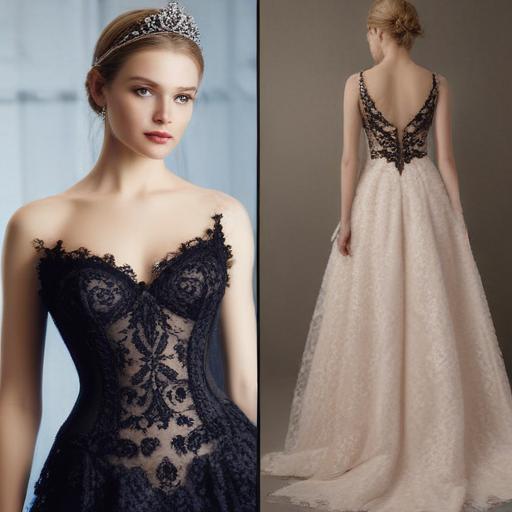In the final year of Princess Diana’s life, fashion became a powerful language of independence and self-expression. Her appearances in late 1990s, especially the Met Gala outing and a suite of bold dresses, marked a dramatic shift from royal protocol to a more personal, revelatory style.
Her single Met Gala appearance came in December 1996, when Diana wore a midnight-blue silk slip dress with lace trimming, crafted by John Galliano for Dior, paired with a robe-style dressing gown. The look stood out as perhaps her most unroyal moment to date, signaling a post-divorce phase in which she embraced a freer, more carefree approach to fashion. Contemporary coverage noted that the dress reflected a woman enjoying newfound freedom from Kensington Palace constraints, though Diana herself reportedly wrestled with concerns that the bold choice might embarrass her son William. Fashion commentators would later describe the moment as Diana transitioning from a royal figure to a global style icon.
Beyond that Met Gala night, Diana’s wardrobe in the months that followed underscored a dramatic empowerment. She spent the post-divorce period redefining her public image, often leaning into shorter silhouettes and sexier silhouettes. A standout moment came in June 1997 when she wore a champagne Catherine Walker dress to a New York party, complemented by Jimmy Choo heels. The designer duo she trusted for much of her royal life—Catherine Walker and Jacques Azagury—continued to echo in her wardrobe. Diana was buried in a black Catherine Walker dress, a quiet nod to her long collaboration with the House of Walker that remained a through line in her style.
Jacques Azagury, the designer behind her so-called “Famous Five” dresses, described how those looks pushed her to reveal an increasingly audacious, confident side. The five late-1990s dresses—worn across 1995 to 1997—were noted for their boldness and sex appeal, with Diana allegedly pushing for even shorter hemlines than what her stylists deemed prudent. Among these were the Swan Lake dress, shown in June 1997, and the striking red Washington dress worn in Washington, D.C., on June 18, 1997. Her final birthday look, a black dress worn on July 1, 1997, capped the run as the last red-carpet moment before her untimely death.
As the summer of 1997 unfolded, Diana’s personal life also drew close attention. She spent time with a new partner, Dodi Fayed, and enjoyed holidays in places like St. Tropez. Friends and biographers noted that while outwardly she appeared buoyant, privately she faced a sense of isolation. Yet even in those moments, her fashion choices remained a bold statement of resilience and self-possession. Azagury recalled a plan for a final, daring look—a “goodbye dress” that would have been worn to a Disney premiere in September—designed to outshine all previous outfits. Tragically, she never wore it, but the design itself has come to symbolize the arc of her late-life confidence and willingness to chart her own course.
Diana’s evolution—from a figure bound by royal dictates to a woman who curated her own image with fearless flair—left an enduring impression on fashion. Designers who collaborated with her, including Azagury and Walker, helped crystallize a period in which Diana redefined what it meant to be stylish in the public eye. The broader legacy is clear: her late-life wardrobe became a narrative of emancipation, joy, and the courage to present herself exactly as she wished to be seen.
Summary: In the final chapter of Diana’s life, fashion served as a potent instrument of self-definition. From the headlining Met Gala slip dress by John Galliano for Dior to the so-called Famous Five by Jacques Azagury and the enduring Catherine Walker collaborations, her late-1990s wardrobe reflected a woman who embraced independence, experimented with her image, and ultimately used style to express resilience and empowerment.
Additional notes for value:
– Readers may appreciate a visual timeline of the key outfits (Met Gala 1996; Swan Lake; Washington; final birthday; goodbye dress) to better trace the evolution.
– A short explainer on the designers’ relationships with Diana (Galliano for Dior, Azagury, Walker) could help readers understand how her wardrobe balanced celebrity allure with personal trust.
– Highlight how Diana’s fashion choices continue to influence contemporary royal style and how designers reference her late-1990s silhouettes today.
Overall tone: reflective and hopeful, emphasizing Diana’s growth and the lasting influence of her late-life fashion renaissance.
